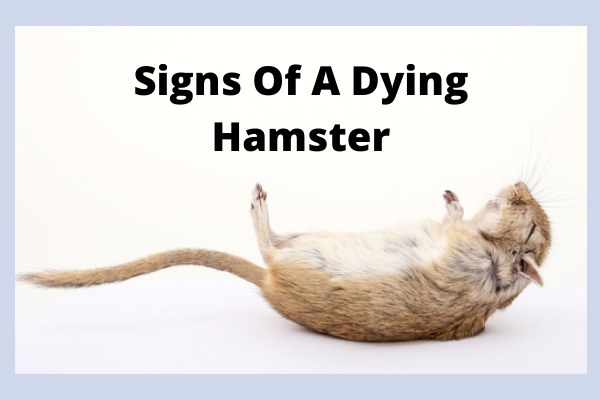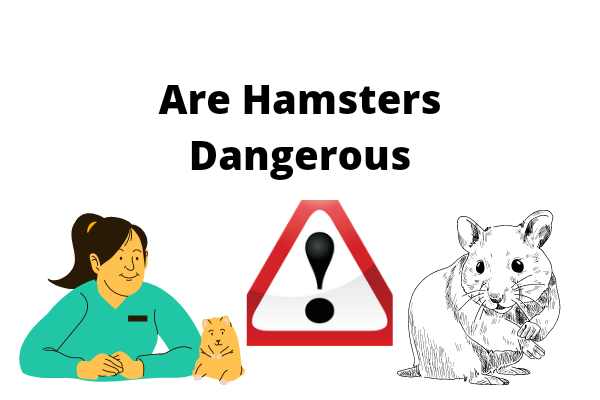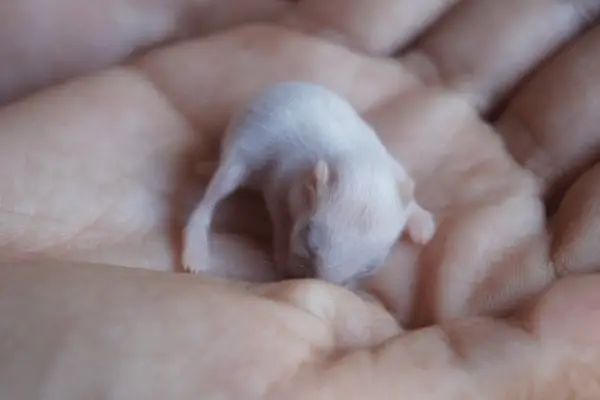11 Common Signs Of A Dying Hamster & Tips

Hamsters owners want to know the signs of a dying hamster, I will outline and discuss all the common signs of a dying hamster in this article, so read through.
If you’ve ever had a hamster, you know that it can live for many years. However, just like with any other animal, it’s possible for them to die.
This does not mean that something is wrong with your pet. It simply means that their time has come, and they want to find peace in this world.
Hamsters are small furry rodents that are popular pets.
Hamsters are easy to care for and can make great companions–but not all pet hamsters live as long as they should.
Signs Of A Dying Hamster
The following are some common warning signs that a hamster might be ill or dying: Loss of appetite, severe weight loss, lethargy, frequent sneezing or difficulty breathing, and inactivity.
Notice any of the following symptoms? It’s time to take your hamster to the vet!
Although hamsters can have many different illnesses, which will affect their appearance and behavior.
Here are some signs of a dying hamster:
Dying hamsters lack appetite to eat completely
Lack of appetite, which is one of the most common signs of illnesses or time up in hamsters, might explain why they aren’t eating or drinking.
When a hamster is dying, he or she will refuse to eat or drink.
Rapid or significant weight loss, as well as indications of dehydration, may be observed.
Even though hamsters sleep during the day, they need to feed regularly.
Keep track of whether or not your hamster is eating, as well as how much he is consuming.
Keep a careful eye on your hamster’s eating level over the next day or two if he’s eating less but still eating.
If your hamster stops eating, you should take him to the veterinarian as soon as possible.
Dying hamsters become weak and less active completely
Hamsters are usually quite busy, particularly at night.
Your hamster will most likely sleep most of the day, so don’t be concerned if he or she naps a lot when the sun is shining.
A hamster that is not moving and is indifferent or inactive might be an indication of both illness, stress, or a sign of death.
A dying hamster, unlike a stressed rodent, is typically unable to move or has difficulty reacting to cues from its surroundings.
Pay special attention over the following several days if your hamster appears to be less active and lively than usual.
Take your hamster to the veterinarian if the hamster’s activity levels do not return to normal.
When the weather remains cold for an extended period of time, hamsters will naturally hibernate.
Warm up the environment and make sure there is food and water available for when the hamster awakens if you suspect your hamster is hibernating.
As suggested by what seems to be a very deep slumber and extremely short breath.
Dying hamsters show alterations in behavior
Keep track of any changes in your hamster’s behavior or appearance.
A wet tail can cause drowsiness and a ruffled coat in those who are severely afflicted.
Furthermore, a hamster suffering from a serious, life-threatening condition may become very motionless and refuse to feed.
Pain and vulnerability in hamsters can trigger behavioral changes in them, causing them to become more scared, aggressive, and anxious than usual.
Dying hamsters develop breathing difficulties
Check for indications of difficulty breathing. If your hamster is gasping or huffing, it may be an indication that he or she is dying.
Respiratory distress can also be characterized by noisy and heavy breathing, which can be life-threatening.
There will be a change in a hamster’s vital signs if it is dying. Its breathing may seem choppy, its heart rate will feel slower, and its body temperature may drop.
The time it takes for a hamster’s capillaries to refill will likewise rise, and it will take more than 2 seconds for its mucous membranes to return to their usual hue.
The mucous membranes may also seem abnormally colored, white or blue, in situations of poisoning or severe oxygenation difficulties.
Dying hamsters show gastrointestinal abnormalities
Keep an eye out for any stomach issues in your hamster. Hamsters are susceptible to a highly infectious disease known as “wet tail.”
If not treated promptly, this disease can swiftly worsen and lead to death.
Excessive diarrhea and loss of appetite are two signs that your hamster may be dying from this condition.
Dying hamsters show bloody discharges
Look for a runny nose, red or irritated eyes, and puffy cheeks in particular.
When ill, hamsters frequently have runny noses and are particularly susceptible to colds.
These are usually not life-threatening illnesses, but if they continue, consult a veterinarian.
Your hamster has pouches in his cheeks that he uses to transport food.
If these pouches appear to be filled for an extended period of time, they may be diseased.
Any bloody discharge from the hamster should be noted.
If you notice blood flowing from the hamster’s eyes, nose, ears, mouth, or anus, it’s a sign that it’s unwell and soon to die.
Dying hamsters have frequent hair loss
Take a look at the hamster’s coat. A hamster’s fur should be full and glossy in most cases.
Hamsters’ fur will thin as they get older. This is very normal.
If your hamster’s fur starts to fall out all at once, he might be ill or dying.
An infection can be detected by wet, matted fur around the hamster’s belly and tail.
Dying hamsters may show persistent skin problem
Take a steady look at the hamster’s fur. Skin changes in your hamster might indicate a health concern or death signs.
Look for redness, swelling, and abscesses, which are all symptoms of infection that come by often as hamsters age.
Lift the loose skin (the scruff) across the hamster’s shoulders to check for dehydration.
It should pop back into place if you let go – this is typical. The skin of a dehydrated hamster “tents” or remains in a peak.
This is a dangerous symptom, and you should have your hamster examined by a veterinarian.
When your hamster has a skin condition, she may scratch more. This may serve as a signal to you that the hamster is about to exit life.
Dying hamsters may have frequent diarrhea
Make sure your hamster doesn’t have any diarrhea from eating contaminated food.
Wet tail is a frequent hamster disease that is followed by diarrhea.
It might be a sign of a severe infection or a sign your hamster is dying. Look for a moist, mucus-like material at the base of your hamster’s tail.
It’s possible that your hamster has a wet tail if he or she has diarrhea and changes in eating and activity levels.
Within 48 hours, a wet tail might be deadly. As a result, you must act quickly and consult with a veterinarian.
If a wet tail is discovered, the veterinarian may prescribe antibiotics, anti-diarrhea medication, or fluids.
Dying hamsters develop sticky eyes frequently
Your hamster’s eyes will begin to alter as he or she grows older.
Their eyes may get more matte as they age, and they may have sticky eyes.
The sticky eye is a typical condition in elderly hamsters, and it occurs when a particle of dust or bedding becomes lodged in their eye while they are resting.
When they wake up, their eyeballs become locked together as a result of this.
You may assist them by gently wiping their eyes with a little piece of wetted cloth.
It mostly affects older hamsters, although it can also impact younger ones.
Dying hamsters have severe weight loss
Due to the fact that dying hamsters develop a loss of appetite, they are usually prone to severe weight loss.
When your hamster starts to develop unnecessary severe weight loss, you need to see your vet.
Recommended articles on hamsters:
- Why Is My Hamster Sleeping At Night: 9 Common Reasons.
- Are Hamsters Dangerous: 12 Bad Things About Hamsters.
- Are Hamsters A Good Pet: 24 Hamster Pros & Cons.
- What Fruits Can Hamsters Eat: 12 Safe Fruits & Guidelines.
How to know a hamster is dead
When a hamster is dying, its respiration becomes more frantic and choppy, and its pulse gradually decreases until it is exhausted.
It’s also conceivable that your hamster has tremors or a clenched jaw.
No apparent breathing or movement, released sphincters, and absence of pulse are the final signs your hamster is dead.
Ways to care for dying hamsters
Here are the most common ways to care for and comfort a dying hamster:
- Providing a Safe and Comfortable Environment for Your Hamster.
- Transfer your hamster to a new home.
- Clean up the natural environment.
- As quickly as possible, avoid dehydration.
- Warm up your hamster in his new home.
- Warmth and comfort may be provided by holding your hamster.
- Food and water should be replaced for your hamster.
- Place your hamster’s food and water bowls near together.
- Protein should be increased in your hamster’s diet.
- More liquids should be provided.
- Feed your hamster using a syringe or by hand.
- Allowing your hamster to consume too much at once is not a good idea.
- Medication for pain management should be provided.
- Keep an eye out for indications of sickness, both severe and minor.
- Keep an eye out for symptoms of serious sickness or death.
- Keep an eye out for symptoms of illness or death in your pet’s behavior and contact your veterinarian.
Wrapping up on signs of a dying hamster
Hamsters are extremely popular pets for children. These small domesticated rodents will usually live one to two years.
However, once they get to be about 13 months or two years old, their lifespan begins to decrease.
Most hamsters die from natural causes such as age and disease.
But if your pet is still alive at 13 months old, it might be showing some signs of dying.
Major signs include loss of appetite, lethargy, and difficulty breathing.
If you notice any of these symptoms in your hamster, it is important to take them to the veterinarian as soon as possible.






